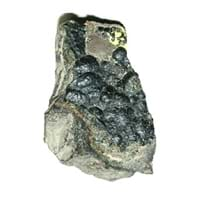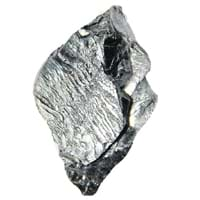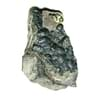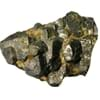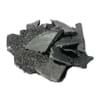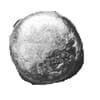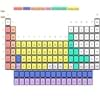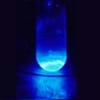Uranium vs Tantalum
Periodic Table
Symbol
U
Ta
Group Number
0
18
5
13
Period Number
7
6
Block
f block
d block
Element Family
Actinide
Transition Metal
CAS Number
7440611
28
7440257
99+
Space Group Name
Cmcm
Im_ 3m
Space Group Number
63.00
10
229.00
1
Facts
Interesting Facts
- Major mining countries of Uranium include Russia, Australia, Namibia, Canada and Niger and total 33% Uranium are mine in Kazakhstan.
- Tantalum metal is known as corrosion resistance.
- Tantalum metal can easily fabricated and It is a good conductor of heat and electricity.
Sources
Earth's crust, Mining, Ores of Minerals
Found in Minerals, Mining, Ores of Minerals
History
Who Discovered
Not Available
Anders Gustaf Ekeberg
Discovery
In 1789
In 1802
Abundance
Abundance In Universe
2 * 10-8 %
29
8 * 10-9 %
31
Abundance In Sun
~0.0000001 %
26
~-9999 %
Abundance In Meteorites
0.00 %
99+
0.00 %
99+
Abundance In Earth's Crust
0.00 %
36
0.00 %
37
Abundance In Oceans
0.00 %
11
0.00 %
31
Uses
Uses & Benefits
- The main use of this metal include nuclear fuel which is used to generate electricity yin nuclear power stations.
- Synthetic elements like transuranium are made from Uranium metal.
- Tantalum metal is mainly used in the manufacturing of electron components. Its Oxide layer acts as an insulator.
- Tantalum metal is also used in surgical transplant like replacement of bone, skull plates and as a woven gauze.
Industrial Uses
Ammunition Industry, Chemical Industry
Electrical Industry, Electronic Industry
Medical Uses
NA
NA
Other Uses
Alloys, Jewellery, Nuclear Reactor's Fuel, Sculptures, Statues
Alloys
Biological Properties
Toxicity
Toxic
Low Toxic
Present in Human Body
No
Yes
In Bone
Not Available
0.03 p.p.m.
28
Physical Properties
Melting Point
1,132.00 °C
39
2,996.00 °C
4
Boiling Point
3,818.00 °C
16
5,425.00 °C
4
Appearance
Physical State
Solid
Solid
Color
Silvery Gray
Gray Blue
Luster
Metallic
Metallic
Hardness
Mohs Hardness
6.00
6
6.50
5
Brinell Hardness
2,350.00 MPa
2
440.00 MPa
28
Vickers Hardness
1,960.00 MPa
2
870.00 MPa
12
Speed of Sound
3,155.00 m/s
25
3,400.00 m/s
22
Optical Properties
Reflectivity
Not Available
78.00 %
6
Allotropes
No
No
α Allotropes
Not Available
Not Available
β Allotropes
Not Available
Not Available
γ Allotropes
Not Available
Not Available
Chemical Properties
Chemical Formula
U
Ta
Isotopes
Known Isotopes
25
14
31
8
Electronegativity
Pauling Electronegativity
1.38
28
1.50
27
Allred Rochow Electronegativity
1.22
26
1.33
22
Allen Electronegativity
Not Available
1.34
33
Electropositivity
Pauling Electropositivity
2.62
26
2.50
27
Ionization Energies
1st Energy Level
597.60 kJ/mol
99+
761.00 kJ/mol
18
2nd Energy Level
1,420.00 kJ/mol
99+
1,500.00 kJ/mol
40
3rd Energy Level
1,900.00 kJ/mol
99+
Not Available
4th Energy Level
3,145.00 kJ/mol
99+
Not Available
Electrochemical Equivalent
1.48 g/amp-hr
99+
1.35 g/amp-hr
99+
Electron Work Function
3.63 eV
30
4.25 eV
21
Other Chemical Properties
Ionization, Radioactive Isotopes, Radioactivity
Anti Corrosion, Ionization, Radioactive Isotopes, Radioactivity, Solubility
Atomic Properties
Atomic Number
92
26
73
99+
Electron Configuration
[Rn] 5f3 6d1 7s2
[Xe] 4f14 5d3 6s2
Crystal Structure
Orthorhombic (ORTH)
Body Centered Cubic (BCC)
Crystal Lattice
ORTH-Crystal-Structure-of-Uranium.jpg#100
BCC-Crystal-Structure-.jpg#100
Atom
Number of Protons
92
26
73
99+
Number of Neutrons
146
13
108
28
Number of Electrons
92
26
73
99+
Radius of an Atom
Atomic Radius
156.00 pm
29
146.00 pm
35
Covalent Radius
196.00 pm
14
170.00 pm
25
Van der Waals Radius
186.00 pm
33
200.00 pm
28
Atomic Weight
238.03 amu
21
180.95 amu
38
Atomic Volume
12.59 cm3/mol
40
10.90 cm3/mol
99+
Adjacent Atomic Numbers
Valence Electron Potential
170.00 (-eV)
4
110.00 (-eV)
7
Lattice Constant
295.08 pm
99+
330.13 pm
99+
Lattice Angles
π/2, π/2, π/2
π/2, π/2, π/2
Lattice C/A Ratio
Not Available
Not Available
Mechanical Properties
Density
Density At Room Temperature
19.10 g/cm3
17
16.69 g/cm3
18
Density When Liquid (at m.p.)
17.30 g/cm3
7
15.00 g/cm3
9
Tensile Strength
Not Available
Not Available
Viscosity
Not Available
Not Available
Vapor Pressure
Vapor Pressure at 2000 K
0.01 (Pa)
20
0.00 (Pa)
31
Elasticity properties
Shear Modulus
111.00 GPa
10
69.00 GPa
13
Bulk Modulus
100.00 GPa
16
200.00 GPa
8
Young's Modulus
208.00 GPa
10
186.00 GPa
13
Poisson Ratio
0.23
30
0.34
10
Other Mechanical Properties
Ductile, Malleable
Ductile
Magnetic Properties
Magnetic Characteristics
Specific Gravity
18.80
10
16.65
11
Magnetic Ordering
Paramagnetic
Paramagnetic
Electrical Properties
Electrical Property
Poor Conductor
Conductor
Resistivity
0.28 nΩ·m
99+
131.00 nΩ·m
25
Electrical Conductivity
0.04 106/cm Ω
37
0.08 106/cm Ω
27
Electron Affinity
Not Available
31.00 kJ/mol
29
Thermal Properties
Specific Heat
0.12 J/(kg K)
40
0.14 J/(kg K)
37
Molar Heat Capacity
27.67 J/mol·K
15
25.36 J/mol·K
99+
Thermal Conductivity
27.50 W/m·K
40
57.50 W/m·K
27
Critical Temperature
Not Available
Not Available
Thermal Expansion
13.90 µm/(m·K)
27
6.30 µm/(m·K)
99+
Enthalpy
Enthalpy of Vaporization
477.00 kJ/mol
13
753.10 kJ/mol
2
Enthalpy of Fusion
15.48 kJ/mol
19
31.40 kJ/mol
3
Enthalpy of Atomization
489.50 kJ/mol
14
782.00 kJ/mol
3
Standard Molar Entropy
50.20 J/mol.K
31
41.50 J/mol.K
37
|
||
|
||
|
